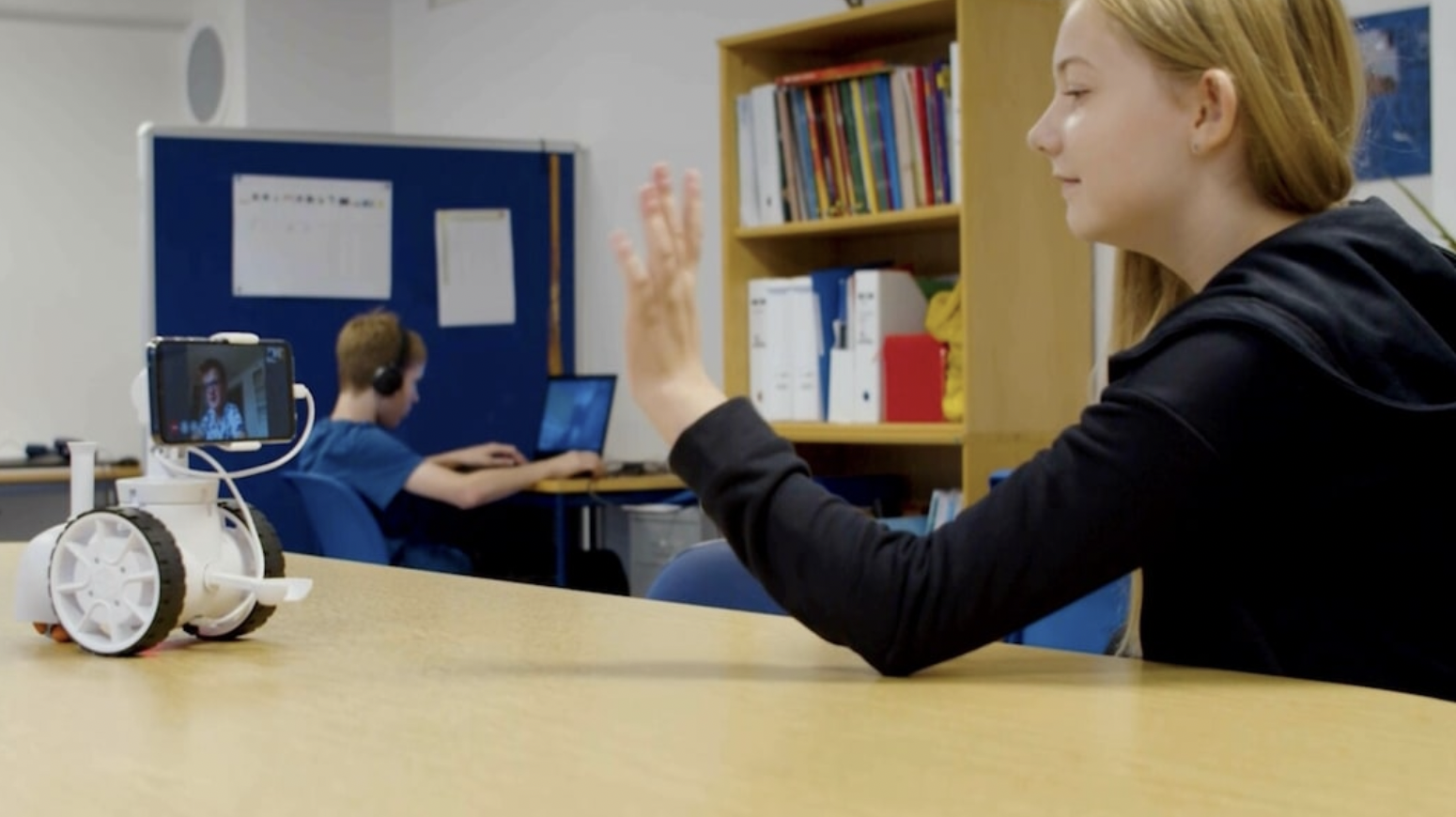Ericsson-enabled 5G robot bridges school distance learning barriers in Denmark
An innovative 5G robot connectivity trial is an excellent example of digital inclusion.

A teenage student who has a medical condition which prevents him from physically attending school, has been able to join his classmates in real time, inside and outside the classroom, thanks to an innovative 5G robot connectivity trial in Denmark, by Ericsson.
13-year-old Rasmus Dalsten from Herlev in Denmark now experiences a full day in the presence of his peers via a tablet with a live video connection from a 5G smartphone mounted on a fully mobile robot in the school premises. The extremely low latency, fast 5G speed and high data-handling capabilities of 5G mean that Rasmus, who is unable to physically attend school because of a lung condition, not only doesn’t miss out on classroom or schoolyard activity but has the freedom to move and look where he wants. Rasmus had a previous robot, but that was controlled by teachers and classmates at school - if he wanted to change the view of what he was seeing, someone at school had to physically turn the robot in that direction.
Real-time eyes and ears
With 5G, Rasmus has full control of the robot, called Fable, which is about the size of a small teddy bear. Wherever he wants to go, and whoever he wants to make contact with at school, he controls Fable to become his real-time eyes and ears. He can react to classroom lessons as they happen by steering Fable himself. If someone behind Fable makes a comment as part of a discussion, Rasmus can manoeuvre Fable to see who is speaking, and join in.
“He is able to look around and make eye contact with them.”
Charlotte Dalsten.
“I’ve got a new robot that I can turn around myself and it’s no trouble for the adults or myself. It is very nice,” says Rasmus. Rasmus’s mother, Charlotte Dalsten, is impressed that Fable, which Rasmus has trialled for six months, allows him to make instant eye contact with his classmates. “Rasmus logs onto the PC and the iPad, which is connected to the robot,” explains Charlotte. “This way he gets to be with his school class all day, during lunch breaks and in class. It has been important for me to see that Rasmus is happy when he logs on, that the others interact with him and that he is able to look around and make eye contact with them,” she continues.
Impressively, Rasmus’s teacher, Cille, says the 5G-powered robot enables Rasmus to take part in lessons on a par with other classmates who are physically in the room. “It is not me who decides if he looks at the blackboard or if he looks at those in the classroom who are speaking,” she says. “He decides where to look and where to go. That’s what he would do if he was here physically. So that has clearly been the biggest benefit.”
5G trial
The 5G trial emerged from collaboration between Danish communications service provider, TDC Net, Danish robotics company Shape Robotics and Ericsson at the TDC/Ericsson 5G Innovation Hub in Denmark. The companies say the trial has proved the potential of 5G-enabled mobile robotic connectivity use across a host of use cases spanning domestic, workplace and industrial applications.
“With 5G, students experience lightning-fast sound and image.”
Moises Pacheco, Shape Robotics.
“Thanks to the collaboration with TDC NET and Ericsson, we have been able to show the potential in combining 5G technology with robots in an educational setting. Although Fable also works with 4G, in practice, it is a different robot when using 5G. With 5G, students experience lightning-fast sound and image, so they can participate on the same terms as other students,” said Moises Pacheco, CTO and Co-Founder, Shape Robotics.
Get up to speed with 5G, and discover the latest deals, news, and insight!
“The learnings from this project can be transferred to other areas such healthcare, social care and working remotely across industries.”
Toke Binzer, TDC NET.
Toke Binzer, Vice President, Technology, Strategy and Economics, TDC NET, agreed, saying: “It is roughly a year since we initiated the launch of the first nationwide 5G network in Denmark. Since then, we have seen increased interest in using the technology to deliver value within many different sectors. Robots connected to the 5G-network can, unlike other robots, both send and receive large amounts of data without delays, while at the same time being able to be controlled remotely. And if we take a step back from the educational sector it becomes clear that the learnings from this project can be transferred to other areas such healthcare, social care and working remotely across industries.”
- Why 5G small cells are vital for mmWave 5G
- Get updates on the hottest 5G stocks
- Discover the truth behind 5G dangers
- 5G towers: everything you need to know
Rachael is a British journalist with 17 years experience in the publishing industry. Since launching www.digitalcameraworld.com, she’s been freelancing, and working for some of the world’s best-loved websites and magazines including T3.com and TechRadar.com and has also had a book, iPad for Photographers, published. A regular contributor at 5Gradar, Rachael is following the 5G market closely. Find out more at www.rachaelsharpe.com

